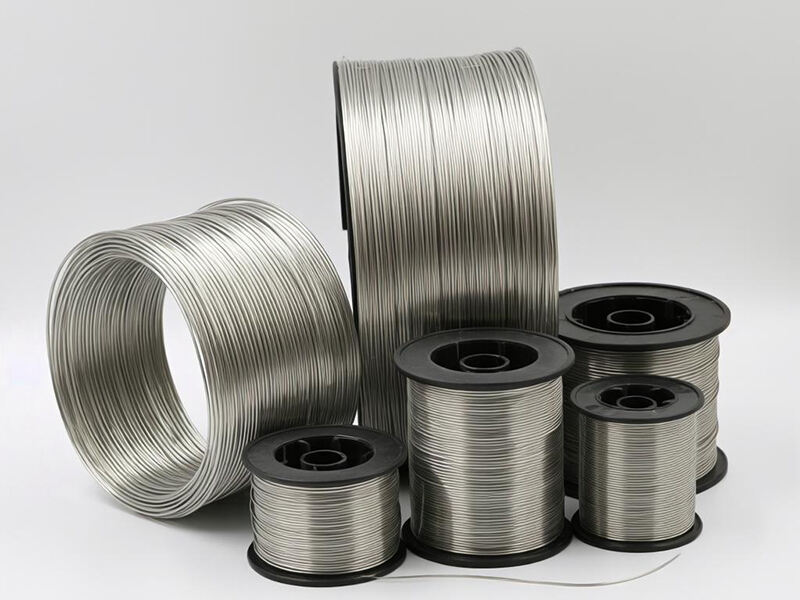The resistance wire market plays a pivotal role in various industries due to the growing demand for heating elements, electrical components, and other related applications. These wires, typically made from materials like nickel-chromium, iron-chromium-aluminum, and other alloys, are essential in numerous sectors such as home appliances, automotive, industrial heating, and electronics. Below is an overview of the current market trends, growth drivers, challenges, and future outlook for resistance wire products.
Resistance wires, primarily used as heating elements or electrical resistors, are a critical component in a range of devices and industrial applications. These wires are known for their ability to convert electrical energy into heat due to their high electrical resistivity. The materials most commonly used for resistance wires include:
· Nickel-Chromium Alloys (e.g., NiCr 80/20): Known for their high temperature stability and oxidation resistance.
· Iron-Chromium-Aluminum Alloys (e.g., FeCrAl): Widely used for industrial heating elements and applications requiring high-temperature resistance.
· Kuparilejeeringit: Less common but used in specific low-power applications.
The global market for resistance wires is growing steadily due to the increasing demand for electric heating elements in a variety of appliances and industries. In 2023, the global market size was valued at USD 1.2 billion, and it is expected to reach USD 1.8 billion by 2030, growing at a compound annual growth rate (CAGR) of around 5.6%.
Several factors are driving the demand for resistance wire products:
(1) Growing Demand for Heating Elements
With the increasing use of electrical appliances, the demand for resistance wires, which are integral to electric heating elements, is on the rise. Key applications include:
· Home Appliances: Electric stoves, ovens, water heaters, and space heaters all require resistance wires for effective operation.
· Industrial Heating: In industries such as metallurgy, automotive, and chemicals, where high-temperature processes require durable and reliable heating elements.
(2) Industrialization and Urbanization
The ongoing industrialization and urbanization in emerging markets such as China, India, and Southeast Asia have led to a higher demand for industrial heating systems, electronic appliances, and automotive components. The growth of manufacturing sectors also increases the need for efficient heating technologies, which drives the demand for resistance wire products.
(3) Electric Vehicles (EVs) and Green Energy Solutions
The growing adoption of electric vehicles (EVs) and the development of renewable energy systems contribute to the demand for resistance wires. In electric vehicles, resistance wires are used in battery management systems, heating elements, and onboard chargers. Additionally, the transition to clean energy, such as solar energy, creates a need for electrical components like resistance wires in energy conversion and storage systems.
(4) Technological Advancements
Innovations in materials science, such as the development of advanced alloys with better resistance to oxidation and thermal stability, are enhancing the performance and longevity of resistance wires. This opens up new applications in high-performance systems that require precise heating, such as in aerospace, electronics, and medical devices.
Despite the strong demand, the resistance wire market faces several challenges:
(1) Raw Material Price Fluctuations
The prices of raw materials like nickel, chromium, and aluminum are subject to fluctuations due to geopolitical factors, mining limitations, and changes in global demand. These price variations impact the overall cost of producing resistance wires, which can affect profitability for manufacturers.
(2) Competition and Price Sensitivity
The market for resistance wire products is highly competitive, with numerous manufacturers offering a variety of alloys at different price points. Price sensitivity among customers, particularly in price-driven segments like home appliances, can put pressure on manufacturers to reduce costs while maintaining product quality.
(3) Technological Obsolescence
As new materials and technologies emerge, resistance wire manufacturers must continually invest in research and development to keep up with technological advancements. Failure to innovate can result in obsolescence, especially in high-performance sectors such as electronics and aerospace.
(1) North America
North America is one of the largest markets for resistance wires due to its well-established industrial and automotive sectors, along with growing demand for electric heating products. The U.S. and Canada are also seeing an increase in renewable energy installations, such as solar power systems, which utilize resistance wire components for energy storage and conversion.
(2) Europe
Europe is a key market, with significant demand coming from the automotive, aerospace, and industrial heating sectors. The European Union's focus on reducing carbon emissions and increasing energy efficiency also drives innovation and investment in high-performance resistance wire technologies.
(3) Asia-Pacific
The Asia-Pacific region is expected to see the fastest growth in the resistance wire market, driven by rapid industrialization, growing demand for home appliances, and an expanding automotive sector. China, India, and Japan are the largest contributors to this growth, with China being a major producer of both resistance wires and the raw materials required for their manufacture.
(4) Latin America & Middle East
While smaller in market size, regions like Latin America and the Middle East are also seeing steady growth, particularly in industrial heating applications. Increasing industrialization and the rise in energy demand contribute to the growth of resistance wire applications.
The resistance wire market is expected to continue its steady growth trajectory over the next decade, driven by several factors:
· Increased adoption of renewable energy will require more efficient and durable electrical components like resistance wires in energy storage systems, electric vehicles, and green technology.
· Teknologian kehitys in resistance wire alloys, which offer improved oxidation resistance, higher temperature tolerance, and better overall efficiency, will open up new markets and applications.
· Growing demand in emerging economies as industrialization and urbanization continue, especially in sectors such as home appliances, automotive, and industrial manufacturing.
Overall, the resistance wire market is poised for growth, though manufacturers will need to address challenges such as raw material price volatility, competition, and the need for continuous innovation to stay competitive in this evolving market.



No.88, Luome Industrial Park, Dainan Town, Xinghua, Taizhou City, Kiina
Copyright © TS Heating Alloy Materials Co.,Ltd. Kaikki oikeudet pidätetään | Tietosuojakäytäntö